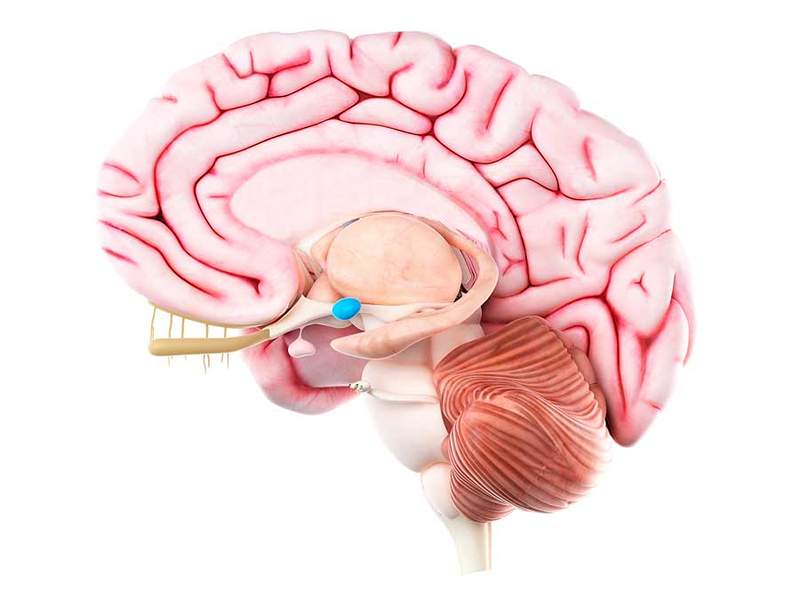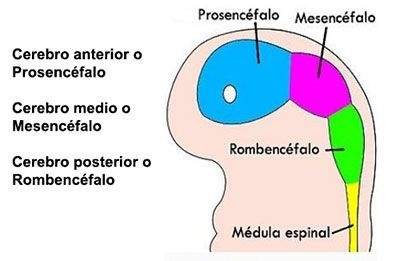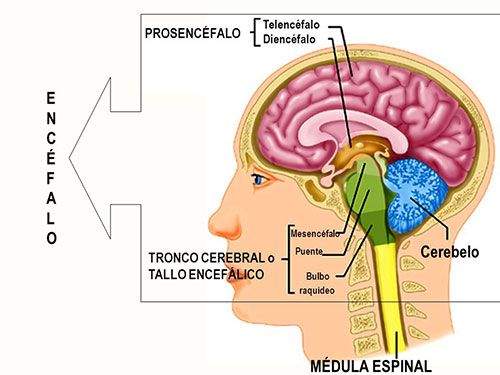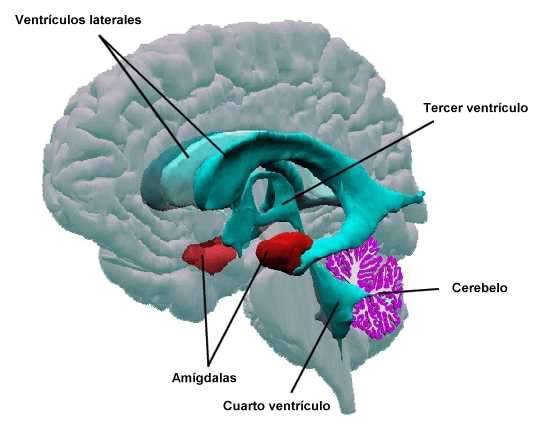Tonsil and its fundamental role in emotional regulation

- 3989
- 614
- Charles Fay
The amygdala is a brain structure that is part of the limbic system, which is involved in the regulation of emotions, motivation and behavior. His name comes from the Greek word that means "almond". As with most other brain structures, we actually have two tonsils. Each amygdala is near the hippocampus, and is located in the temporary part of the brain, in both hemispheres.
Plays a key role in the emotional response, especially in the response to fear and anxiety. This brain structure receives sensory information from auditory and visual pathways and processes this information to determine if it is a potential threat. If a threat is perceived, the amygdala activates the fight or flight response, which prepares the body to respond to the danger situation.
Content
Toggle- Anatomy and structure of the amygdala
- Function of the amygdala
- Neurochemistry of the amygdala, stress and anxiety
- Relationship between the amygdala and the emotional response
- Injuries to the amygdala
- Conclusions
- References
Anatomy and structure of the amygdala
The amygdala is located in the temporal lobe of the brain, which consists of several interconnected nuclei that perform different emotional functions. The amygdala is divided into two main groups of nuclei: the side nuclei and the central nuclei.
The lateral nuclei include the basolateral nucleus and cortical nucleus. The basolateral nucleus is the largest and most complex structure of the side nuclei, and receives a wide variety of sensory information, including visual, auditory and somatosensory information, which is processed in complex circuits for emotional regulation. The cortical nucleus, on the other hand, is involved in the perception of facial expression and emotional expression.
The central nuclei include the central nucleus and medial nucleus. The central nucleus is the smallest structure and is in the central part of the amygdala. It is involved in the generation of automatic emotional responses, such as the activation of the sympathetic nervous system and the release of stress hormones. The medial nucleus is involved in the regulation of social behavior and social decision making.
The amygdala is generated from the prosentephalon, which is the anterior primitive brain or anterior portion of the brain during the embryo development phase, and is formed by telenidephal and diencephalon. Telencéphalo is the largest part of the prosentephal.

During the embryonic development of the neural tube, 3 dilations called Primary cephalic vesicles, which are the prosentephalon, the mesencephalon and the rhombenphal.
They are the portions of the brain when the development of the central nervous system begins. Subsequently, the prosentephalon is divided into a diencephalon (thalamus and hypothalamus), and teleNCEPHALO (cerebral hemispheres).

The neuronal connections of the tonsil are complex and extensive. The amygdala connects with several important brain areas, including the prefrontal cortex, the hippocampus, the thalamus and the hypothalamus, through a series of neuronal pathways. These neuronal connections are important for emotional regulation and emotional memory.
Function of the amygdala
The amygdala receives sensory information from various sources, including the senses of sight, ear and touch, and quickly processes it to determine if information is a threat or potential danger. If the information is considered a threat, the amygdala can trigger a response of "struggle or flight" in the body, activating the sympathetic nervous system and the release of stress hormones such as cortisol and adrenaline.
In addition to its role in response to fear and anxiety, the tonsil is also involved in the regulation of others emotions such as sadness, happiness and anger. It has also been found that it is involved in the Emotional memory, since intense emotional experiences can be stored in the tonsil and then recovered in response to similar stimuli in the future.
Emotional inheritancesNeurochemistry of the amygdala, stress and anxiety
The neurochemistry of the amygdala is intimately related to the response to stress and anxiety. The amygdala contains a large number of neurotransmitter receptors such as serotonin, dopamine, glutamate and gaba, which are fundamental to emotional processing.
When a person experiences a stressful or threatening situation, the amygdala is activated and releases neurotransmitters such as glutamate, substance P and norepinephrine, which increases the excitability of the amygdala and prepares it for a quick and efficient response. The amygdala also activates the sympathetic nervous system, which increases heart rate, breathing and blood glucose release, preparing the body for action.
Anxiety is an emotional response to stress that implies concern, fear and apprehension, and is also related to the activity of the tonsil. Investigations have shown that People with anxiety disorders have greater activity in the amygdala in response to negative emotional stimuli, which suggests greater emotional sensitivity.
In addition, the amygdala is connected to other important brain areas for emotional regulation, such as prefrontal cortex and hippocampus. The prefrontal cortex is responsible for cognitive control and decision -making, and can modulate the activity of the amygdala to regulate the emotional response. The hippocampus, on the other hand, is crucial for memory, and it has been shown that the tonsil and hippocampus interact to form and recover emotional memories.
Throughout the entire brain, the amygdala is considered the structure with more receptors for benzodiazepines. We can also find, in this nucleus, an extensive population of receptors for opioid peptides (involved, for example, in hypoalgesia responses to an acute stressful situation that can generate pain).
Neurochemically speaking, we can relate the amygdala with the neurotransmitter systems that regulate cortical activation. In addition, in this nucleus we can find shallow and noradrenergic, dopaminergic, serotonergic and cholinergic pathways, which allow a wide cortical innervation.

Relationship between the amygdala and the emotional response
Different experimental evidences have shown that Injuries to the central nucleus of the amygdala affect all the responses of fear conditioning. Likewise, its stimulation produces increases in the heart rate, respiratory rate, blood pressure, release of stress hormones, behavioral immobilization, hyperreflexia, among others.
The central nucleus intercedes as a mediator in the activation of the cortical arousal through its direct projections to the cortex (especially the rostral cingular turn and the orbitofrontal cortex) and through its indirect projections, by means of the basal core of Meynert.
The amygdala seems to be a structure involved in the mediation of both emotional responses and the conscious feeling of emotion.
In some studies, researchers directly stimulated the tonsils of patients undergoing brain surgery and asked them to inform their impressions. The subjective experience that these patients reported most frequently was imminent or anger fear and fear. In other studies with a small number of patients who had been destroyed only their tonsil (as a result of a stroke, for example), recognized the facial expressions of each emotion except that of fear.
In fact, the amygdala seems to modulate all our reactions to events that are very important for our survival. The events that warn us of an imminent danger are, therefore, very important stimuli for the tonsil, But so are the events that indicate the presence of food, sexual couples, rivals, children in trouble, etc.
It has also been possible to verify the relationship of the amygdala with implicit memories of stimular keys that signal the emotions expressed facially.
Injuries to the amygdala
The lesions in the core of the amygdala can have a significant impact on emotional regulation and behavior. Depending on the location and extension of the lesion, the symptoms can vary from emotional disorders to changes in social behavior and emotional memory.
The lesions in the central nucleus of the amygdala, for example, They can affect the response to fear and anxiety, And they can result in a decrease or absence of emotional responses in threatening situations. Patients with tonsil injuries may also experience Difficulties in recognizing facial expressions and emotions, which suggests an implication of the amygdala in emotional perception.
In addition, tonsil injuries can affect emotional memory, since it has been shown that the amygdala is involved in the processing and consolidation of emotional memories. Tonsils in the tonsil can cause a decrease in the ability to remember past emotional experiences or a reduction in the intensity of the emotion associated with a specific memory.
In terms of social behavior, injuries in the amygdala can also affect the ability of individuals to interpret and respond to social signals, which can result in difficulties in establishing interpersonal relationships and understanding social norms.
Conclusions
In conclusion, the amygdala plays a crucial role in the regulation of emotions and social behavior. As mentioned, this brain structure is involved in the detection and processing of emotional stimuli, and its dysfunction can be related to psychiatric disorders such as anxiety and depression. In addition, its connection with the brain trunk suggests an important role in the response of the autonomic nervous system. As the study of the amygdala and its function deepens, new possibilities for the development of more effective treatments for these emotional conditions are opened.
References
- Bradford, h.F. (1988). Fundamentals of neurochemistry. Barcelona: Labor.
- Carlson, n.R. (1999). Behavior Physiology. Barcelona: Ariel Psychology.
- Carpenter, m.B. (1994). Neuroanatomy. Fundamentals. Buenos Aires: Panamerican Editorial.
- Delgado, j.M.; Ferrús, a.; Mora, f.; Rubia, f.J. (EDS) (1998). Neuroscience Manual. Madrid: Synthesis.

